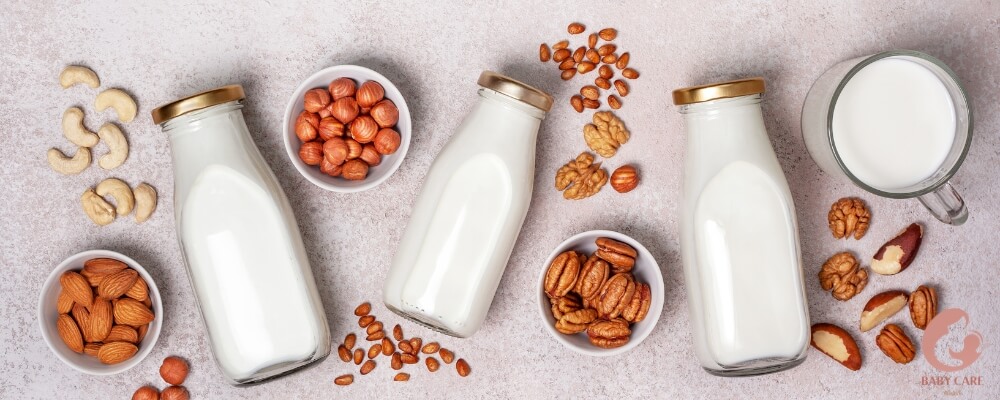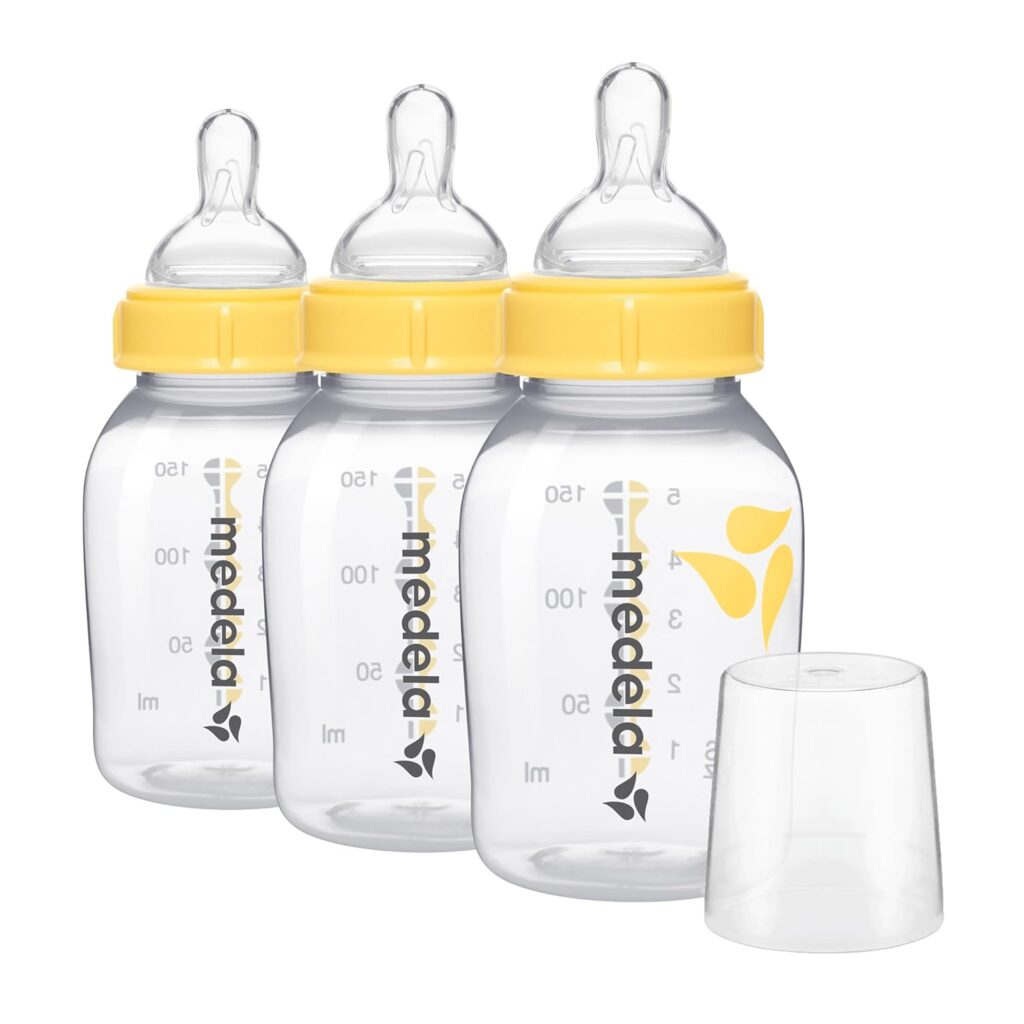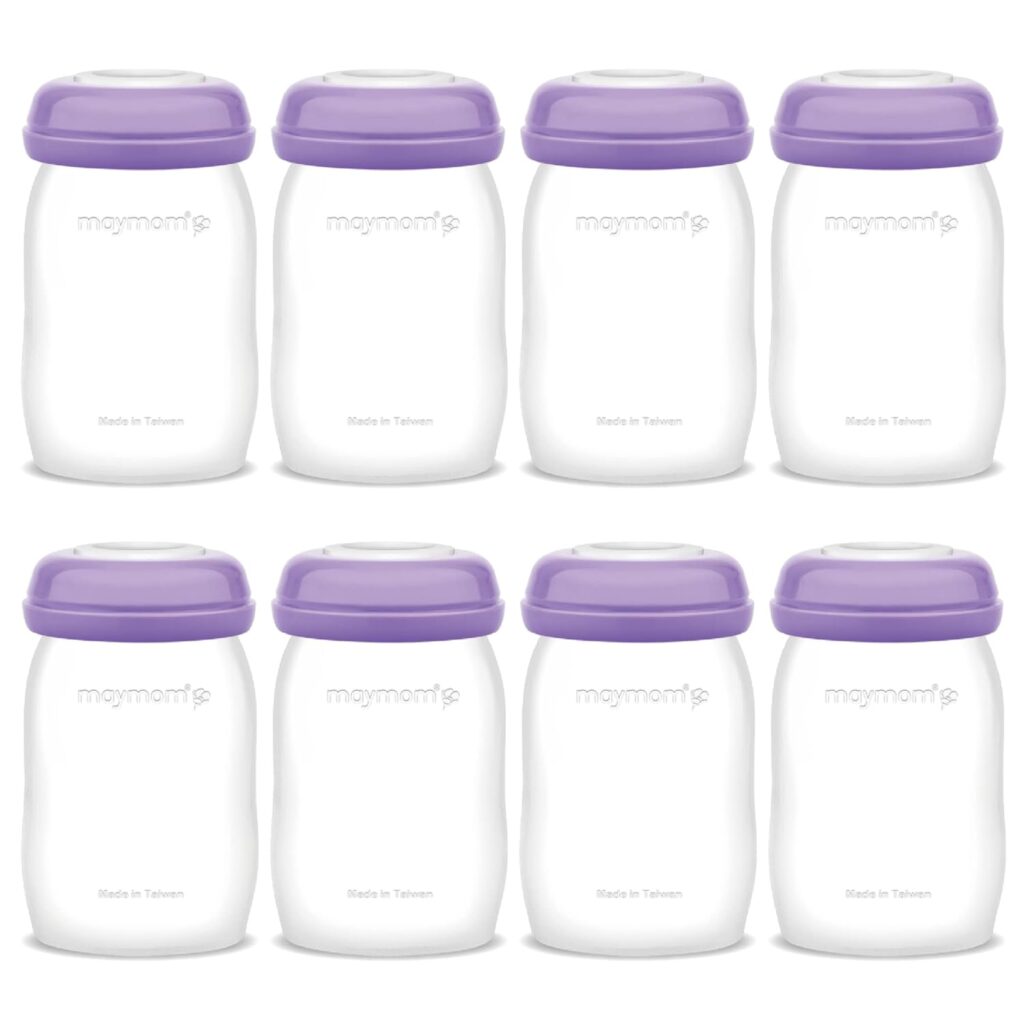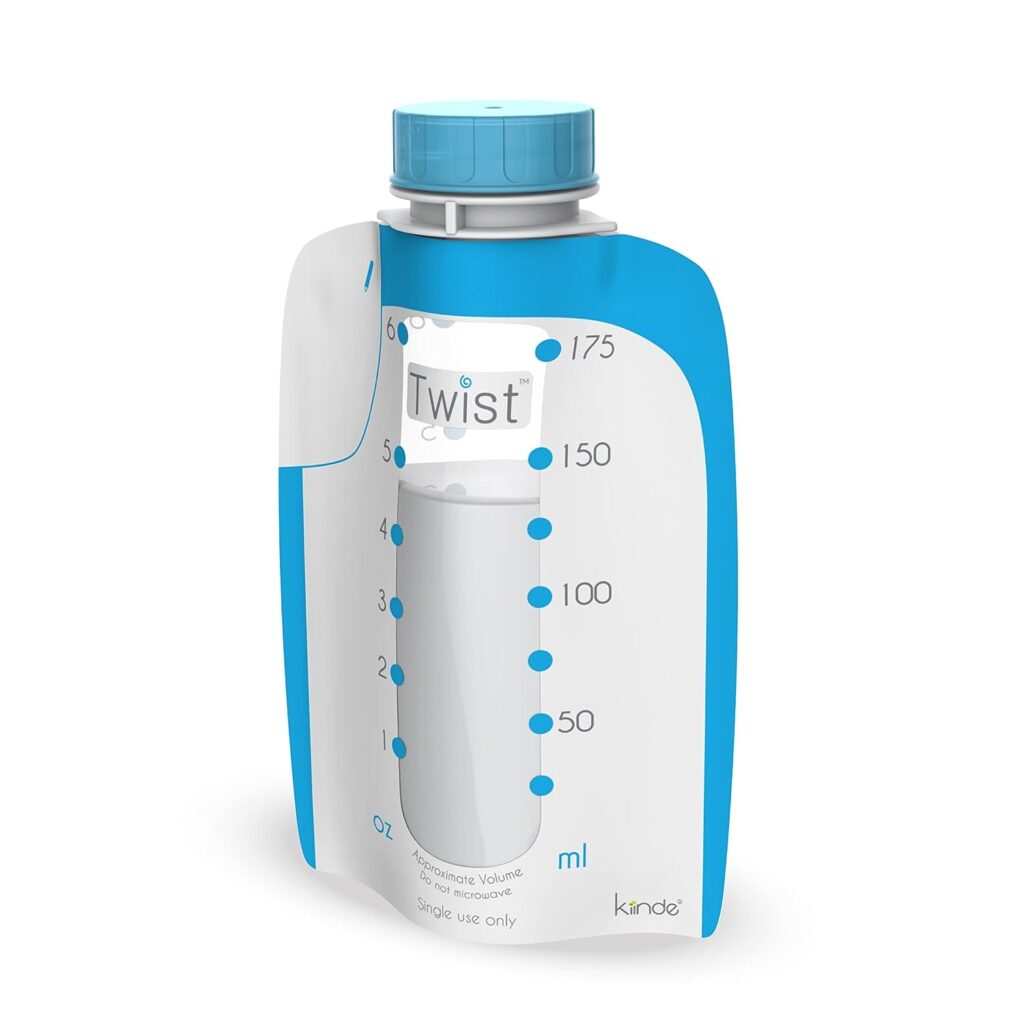Believe it or not, keeping your breast milk is much more than choosing any container and putting it in the fridge. (You see, old pickle jars are completely off!) The right storage can go a long way in maintaining the freshness of this liquid gold that is safe and healthy for your little nursling.
Where then to Keep Your Liquid Gold?
If you’re a nursing mother, we know the score – sometimes you produce more milk than your baby will need at the moment. And that’s where breast milk storage bottles come into play. They aren’t just useful for storing extra milk for later when not at home or even working mums with jobs to do.
However, with numerous types of bottles available in stores, making a choice might be quite daunting. Glass vs plastic? Large or small? Normal bottle or some special storage system? Don’t worry momma, we understand you though.

Breast Milk Storage Bottles; What You Should Think about
Firstly, what we should consider before we start talking about the technical aspects of bottles? Well, let’s see:
- Materials: Are you looking for glass or plastic? However, each has its own pros and cons that we will be looking at in a little while.
- Size: How much milk do you typically pump at a time? This means that you need to buy a bottle size that meets your needs.
- User Friendliness: Bottles that can be easily cleaned, filled and poured from are the best to use.
- Compatibility: Check if the bottles fit on your flanges when using a breast pump kit.
And here it is – one of the biggest questions:
Glass or Plastic – The Great Breast Milk Storage Debate
The age-old debate: is plastic or glass a superior container for storing breastmilk? Therefore, both materials have their good sides as well as bad ones hence there is no unique answer for this issue.
Glass Breast Milk Storage Bottles
- Advantages: It is commonly known as the safest option since chemicals do not leach from glass. Moreover, it is durable and easy to clean up by sterilization.
- Disadvantages: These can be heavier and more likely to break if compared to plastic ones.
Plastic Breast Milk Storage Bottles
- Advantages: They are lighter in weight and less likely to break when dropped. Typically somewhat cheaper than glass ones.
- Disadvantages: Some plastics may leach chemicals so BPA-free options should be chosen carefully.
In summary whether one decides on glass or plastic depends on personal preference. Glass could be considered if safety was paramount but in case someone wanted something light and low priced then perhaps they’d go with plastic instead.
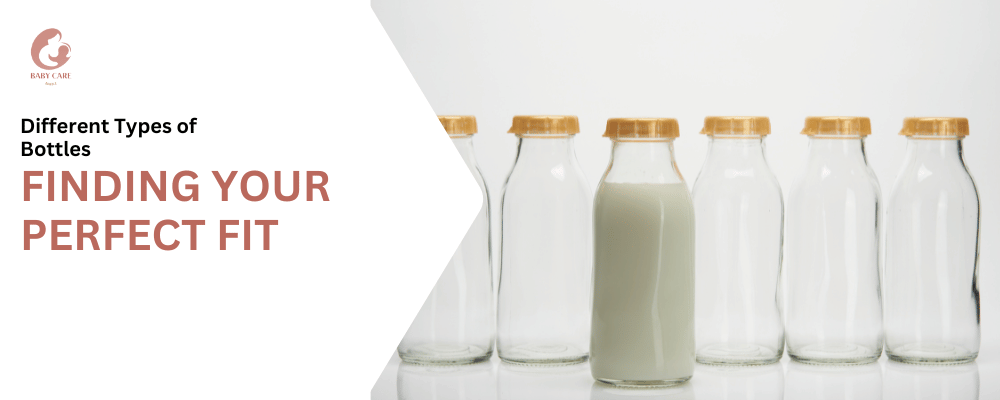
DIFFERENT TYPES OF BOTTLES: FINDING YOUR PERFECT FIT
Various Bottles for Different Purposes: Discovering the Right Match
When it comes to breast milk storage bottles, you’ve got a few options:
- Specialized vessels for storing breast milk: others have measurement marks and can couple with breast pump adaptors.
- Normal baby bottles coupled with storage caps: When you already possess a baby bottle that is your favourite, instead of replacing the nipple, you may change it into a storage cap and use it for storage.
Both work well; however, this depends on what you have available at home and what is important to you in terms of features.
TOP RECOMMENDATIONS: A SNEAK PEEK
We’ll dive deeper into specific bottle recommendations later, but here are a few top-rated options to get you started:
- AVENT NATURAL GLASS BABY BOTTLE – popular glass choice which is known for its toughness as well as convenience.
- Breast Milk Storage Bottles by Lansinoh – these are pocket-friendly plastic types that are also easy to clean since they are BPA-free.
- Breast Milk Bottles by Medela – this type is multipurpose and can be used for both feeding as well as storing milk and is also compatible with Medela breast pumps.
Okay, mummy, let’s get down to business! It’s time to find your breast milk storage bottle, kindred soul. Forget the notion that all bottles are created equal – there are some real superstars out there who can make your life a whole lot easier (and keep your milk safer).
Your Breast Milk Bottle Matchmaker: Finding “The One”
We have already talked about the basic things to consider when choosing a bottle but now let’s narrow it down. I’ve personally selected a few highly-rated bottles for various needs and budgets. Think of this as your own personal bottle matchmaking service!
The Multitasker: Medela Breast Milk Bottles
Medela has got you covered if you’re looking for a bottle that can store, freeze, and feed – all in one. These bottles also work with Medela breast pumps which means you don’t need extra dishes when pumping (how cool is that?). Besides, they are made of BPA-free plastic and are very easy to clean.
- Pros: Versatile, long-lasting, usable with Medela pumps
- Cons: Not the most pocket-friendly option
The Budget-Friendly Pick: Lansinoh Breastmilk Storage Bottles
For mothers on a tight budget, these BPA-free plastic bottles are the preferred choice. They come to light in weight and strong since their caps do not leak off easily. Additionally, they can be stacked together; hence more fridge or freezer space.
- Pros: Cheap, lightweight, leak-free
- Cons: Less attractive than some other alternatives
The Eco-Conscious Choice: Philips Avent Natural Glass Bottles
Glass bottles are a safe and environmentally responsible choice. Premium borosilicate glass, used to make Philips Avent Natural Glass Bottles, is resistant to drastic temperature changes. They are ideal for both feeding and keeping since they function well with Philips Avent nipples.
- Pros: Reliable, environment-friendly, long-lasting
- Cons: Heavier than plastic bottles and may break when dropped
The On-the-Go Option: Kiinde Twist Pouches
These pouches are an innovative option for moms who are always on the run. They can be used with the Kiinde Kozii Bottle Warmer as well as the Kiinde Squeeze Natural Feeding Bottle; hence warming and feeding on the go becomes a breeze. In addition, they freeze well and take up less space compared to regular bottles.
- Pros: Handy for travelling, user friendly, saves space
- Cons: Not reusable; could turn out costly in future
Choosing the Right Bottle for Your Needs
Consider your lifestyle and priorities while choosing the best breast milk storage bottle for you. Think about how often you pump milk, how much of it you usually store and if you prefer glass or plastic. If you’re frequently away from home, maybe a set of Kiinde Twist Pouches is worth investing in. Alternatively, if you value safety and ecological friendliness; consider using glass containers like Philips Avent Natural Glass Bottles. But should one not have enough money to spend then there is no harm in picking one of these Lansinoh Breastmilk Storage Bottles.
Regardless of the container you choose, it should have an airtight top and should be easy to wash and make germ-free. It is very simple to pick the right bottle for storing your liquid gold at present since there are numerous options available on the market.
Mama, you got that! It’s not rocket science to choose the right breast milk storage bottles, but it does require a little bit of thinking. And yes, let us not fall for the myth that we should pay an arm and a leg for designer bottles; there are so many cheap options out there that can do the job great.
Volatile Storage Instructions: Breast Milk Guidelines
Now we have the right bottle for your nectar, so let us know how to store it properly. CDC has just updated its directives on breast milk storage. Previously, they supported “the 5-5-5 rule,” however as of late, further recommendations have been made. What you should know is as follows:
Freshly Expressed or Pumped Milk
- Countertop: Up to four hours at 77°F (25°C) or lower Refrigerator: Up to four days at 40°F (4°C) Freezer: Best by six months; okay up to twelve months
- Thawed, Previously Frozen Milk
- Never refreeze human milk after thawing it.
- Refrigerator: Thawed milk can be stored in the refrigerator for up to 24 hours. Countertop: For about one or two hours at 77°F (25°C) or lower.
Leftover Milk (baby didn’t finish the bottle)
- Use within two hours since the baby stopped feeding.
These guidelines must be followed so as not to compromise on the quality of your breast milk.
Keeping Your Breast Milk Safe and Sound
Additionally besides these guidelines here are several other tips:
- Label it: Always put dates on your breast milk storage bottles this will enable you to use the oldest milk first.
- Store in back while refrigerator/freezer must be kept in front: Store your freezer or refrigerator’s milk in its rear parts instead of keeping them in their doors where temperatures fluctuate more often.
- Freeze it flat: As you freeze any of this, ensure that you lay them flat thus maximizing the space used by your freezer.
- Thaw it safely: Thaw frozen mils under lukewarm running water, a container filled with lukewarm water, or overnight in the refrigerator do not microwave as microwave heat kills nutrients and creates hotspots.
Don’t combine: Freshly expressed milk shouldn’t be mixed with previously chilled or frozen milk.
Additional alternatives to bottles
However, bottles are not the only choices you have for storing your breast milk. For instance, storage bags present an easy way of freezing your liquid gold.
Ziploc bags do not provide any assurance when it comes to breastfeeding containment. No – these cannot be used to store breast milk as they are not safe and could be unclean. Instead, use specialized nursing milk sacks which are thicker and thus pre-sterilized most times. Similarly, keep your milk supply in clean food-grade glass containers with airtight lids.
Glass jars, bottles, or bags—which is better for you?
- Bottles: they’re perfect for keeping in the fridge and can be reused. They are available in glass or plastic, each having pros and cons of their own.
- Bags: More space-efficient for freezing and also convenient for busy moms on the go who want to feed their babies while away from home.
- Glass Container: Another safe alternative that you can keep using for long periods of time without worrying about waste Ensure that they’re meant specifically for food preservation though.
Eventually, choosing between the options will depend on what best suits your lifestyle and personal preferences.
A Word To The Wise: Your Milk, Your Call
Remember, your best bet on a bottle will be one that matches your lifestyle, budget and preference. Regardless of whether you settle on glass or plastic or even both combined in one bottle, the most important thing is to store your liquid gold safely and conveniently.
- If you’re all about saving Mother Earth and protecting your baby’s security then go for glass ones.
- Plastic bottles make sense if what you need is more convenience as well as affordability.
- And when travelling becomes a part of life; those handy breast milk storage bags could save the day!
Still confused over selection? Don’t worry! It could be better to try different alternatives before settling down with one choice. Furthermore, women who have encountered similar situations can provide some invaluable ideas based on their personal experiences.
Pass Along Your Wisdom Mama!
What are some of these breast milk containers that you love? Do you have any tips or suggestions for other moms? Just leave us a comment below and share with us! We’re all going through this together and hearing from others can lighten up our breastfeeding journey just a little bit more easily!. if you are interested to know about Breast Milk Storage Containers please Click Here.
Finally, mama remembered: “You rock!” Keep up the good work without trying too much so long as you look forward to something wonderful each time. Feel free to reach out to lactation consultants or doctors in case you ever find yourself stuck with questions regarding breast milk preservation.

